How to Check Your Oil Level
A 10-step guide to checking your car's oil level.
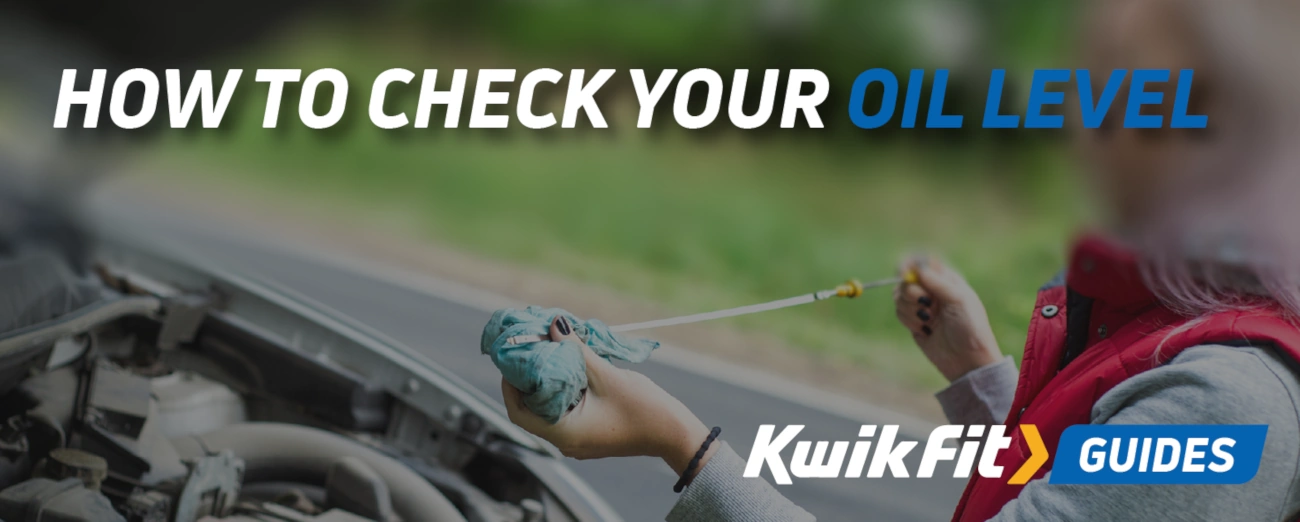
- Park on a flat surface, turn the engine off and wait until it's completely cooled down.
- Lift the bonnet and locate the oil dipstick at the back of the engine.
- Pull out the dipstick and wipe it clean with a cloth.
- Put the dipstick back in, then remove it again to check the oil level.
- Ensure the oil level sits within the ‘cross-hatch’ area or between the ‘hot’ and ‘cold’ lines.
- If the oil is low, add the recommended oil using a long-neck funnel.
- If you need a significant top-up, inspect for leaks.
- Reinsert the dipstick securely after checking.
- Lower the bonnet and ensure it’s properly closed.
- Inspect the oil level monthly to avoid issues.
Driving with low oil levels can cause damage to the components of your engine and decrease your engine's performance. Or, in the worst case, it can lead to your vehicle’s engine overheating and, potentially, breaking down.
Why is engine oil important?
Engine oil is a key factor to keeping your engine in good working order. It’s responsible for:
- Lubricating components of the engine to reduce the risk of friction
- Reducing the build-up of heat
- Keeping the engine clean
- Protecting the engine components from potential corrosion
For car owners and drivers, friction is the biggest concern and contributor to engine issues. It not only causes premature wear and tear to your engine components, but it can also lead to overheating - and an increased likelihood of your engine breaking down.
Most vehicles have an oil warning light on their dashboard that will turn on to notify drivers that the oil level is getting low or needs changing.
What to do if your oil warning light turns on?
It may be tempting to do nothing if your oil warning light comes on, and continue driving. The truth is, if a warning light has appeared, it normally indicates an issue that needs resolving.
The safest thing to do is to pull over somewhere safe as soon as possible. Once you’ve pulled over, you can do a check of your oil following the tips above. There are a couple of signs to look out for when doing an oil check that may indicate your oil needs changing:
- The colour has turned dark
- The oil is coarse and gritty
Additionally, if your oil level keeps dropping even when regularly topped up, or you’ve noticed increased noise from your engine, these are signs that could indicate your oil needs changing.
Reach out to an expert to book an engine oil change.
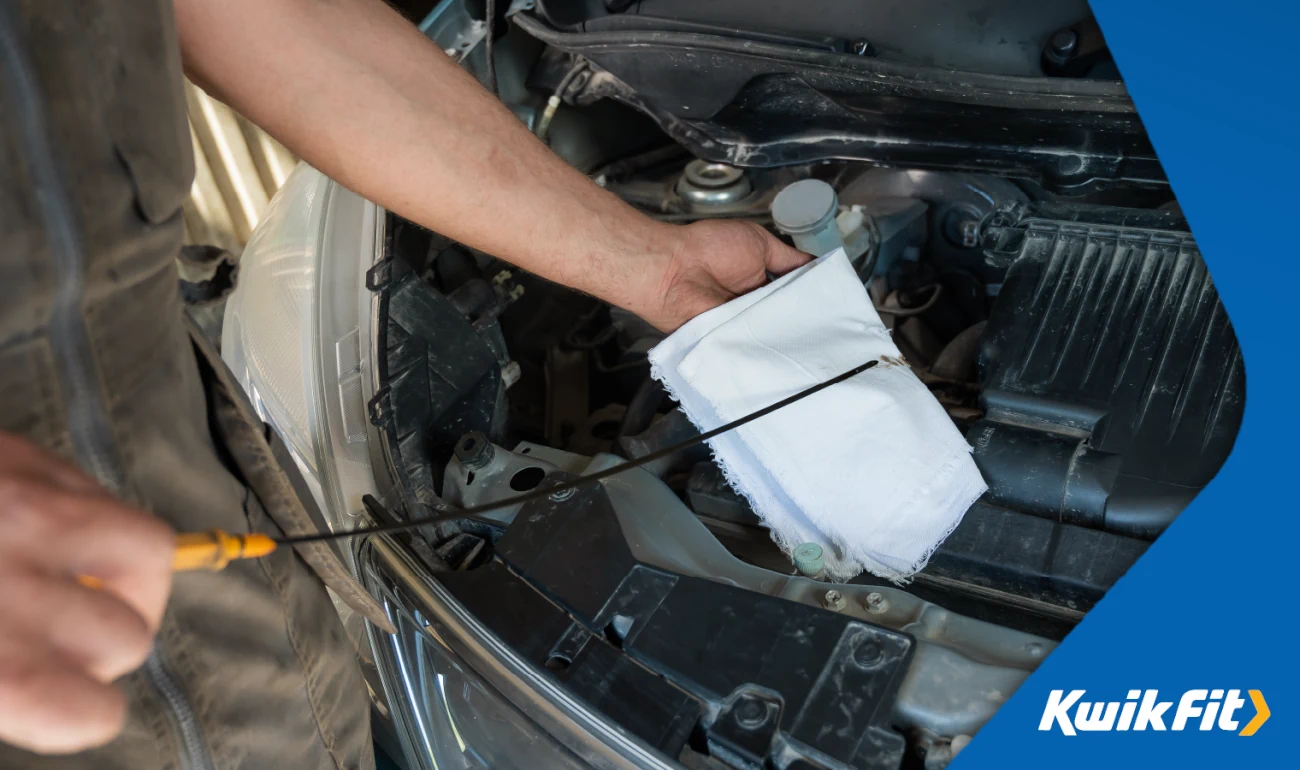
How to check your engine oil level
For a more detailed approach to checking and refilling your oil, read our guide below:
- To obtain a dipstick reading, your engine needs to be running, and your oil needs to be warm. Start by parking your vehicle on a flat surface, activate the brake, and leave it idle until the engine warms.
- Open the vehicle bonnet and find the oil dipstick. This is usually positioned near the back of the engine compartment.
- Pull out the dipstick and wipe it clean with a cloth or towel, then reinsert the dipstick. Now, take the dipstick back out and check the oil. Most dipsticks feature a ‘cross-hatch’ pattern where the oil level should sit. You may also see ‘hot’ and ‘cold’ lines - your oil should never go above the ‘hot’ line.
- If your oil is running low, top it up with the advised level of oil; to do this, you may need a long-neck funnel.
Common pitfalls to avoid
Whilst checking your oil isn’t a difficult task, there are common mistakes that drivers make which can lead to vehicle damage and costly repairs.
These include:
- Not regularly checking the oil - it’s important to check it at least once a month and before long journeys.
- Overfilling - overfilling can lead to extra pressure on the engine and reduced lubrication, increasing the chances of wear and tear on engine parts.
- Not checking for leaks - after changing the oil, it’s important to check for leaks, otherwise this can lead to low oil levels and potential damage to your engine.
- Using the wrong oil when refilling, which can damage the engine and reduce performance.
How often should you check your engine oil level?
We recommend checking all primary fluid levels in your car at least once a month. This includes your engine oil, gearbox oil level, transmission fluid, and steering fluid.
Most engines will usually need an oil change every 7,500 to 10,000 miles but this will depend on the age of your vehicle and the type of oil required.
You can book in for an engine oil and filter change with Kwik Fit today.

1. Park on a flat surface, turn the engine off and wait until it's completely cooled down.
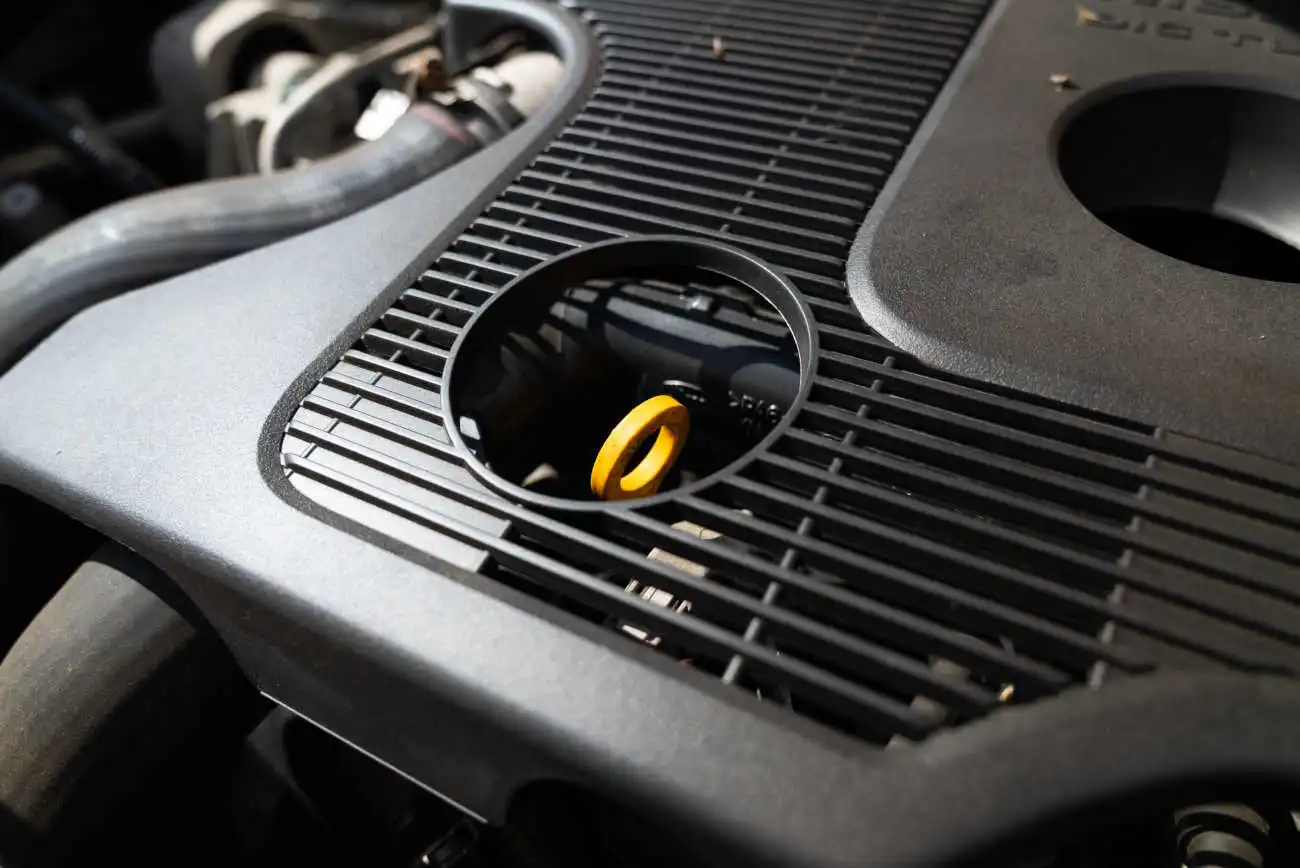
2. Lift the bonnet and locate the oil dipstick at the back of the engine.

3. Pull out the dipstick and wipe it clean with a cloth.
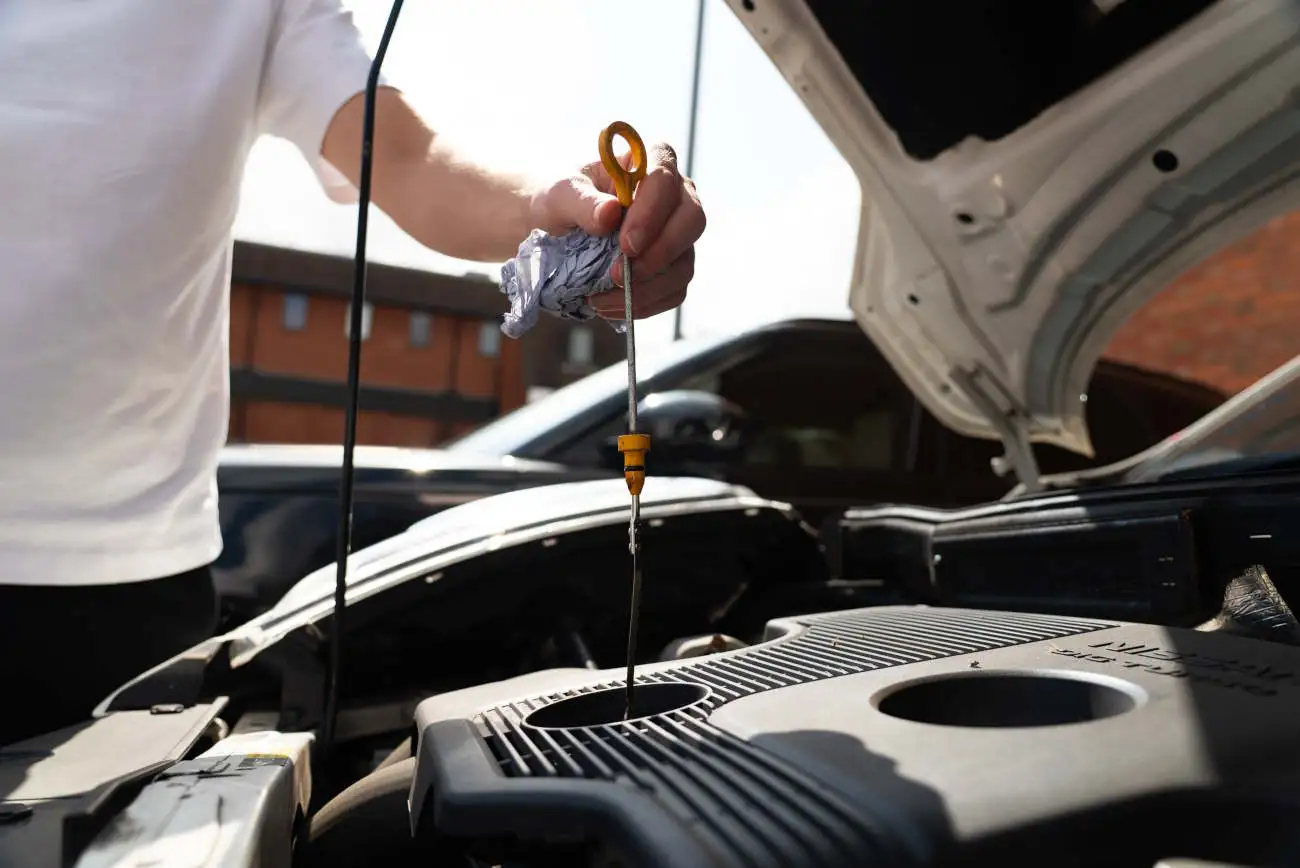
4. Put the dipstick back in, then remove it again to check the oil level.

5. Ensure the oil level sits within the ‘cross-hatch’ area or between the ‘hot’ and ‘cold’ lines.
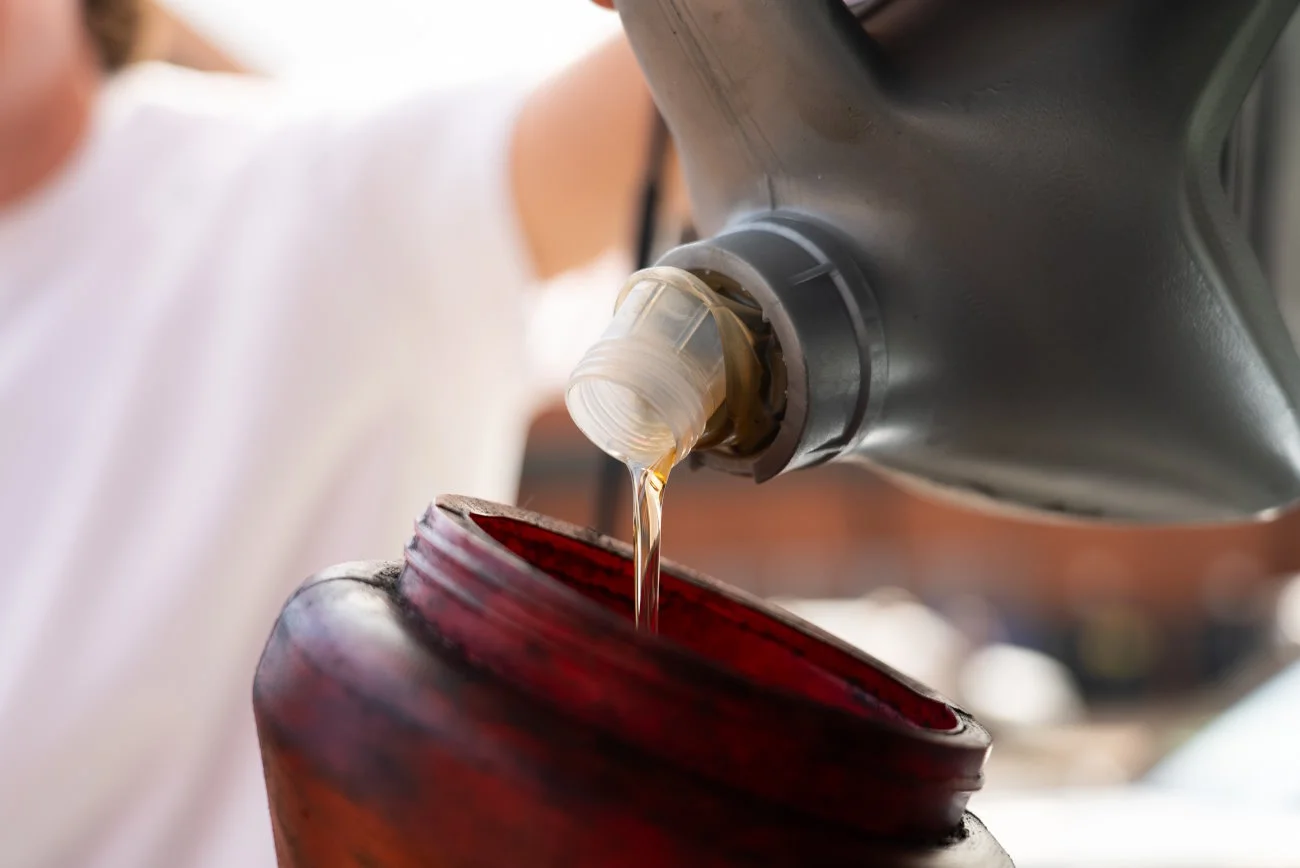
6. If the oil is low, add the recommended oil using a long-neck funnel.
7. If you need a significant top-up, inspect for leaks.

8. Reinsert the dipstick securely after checking.

9. Lower the bonnet and ensure it’s properly closed.

10. Inspect the oil level monthly to avoid issues.






